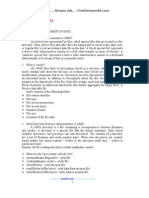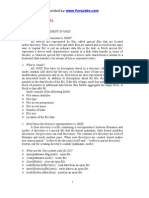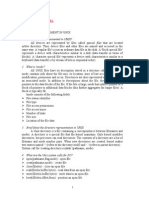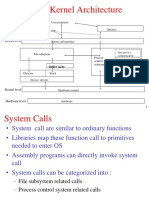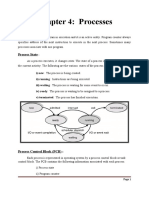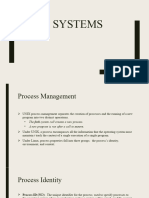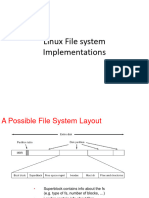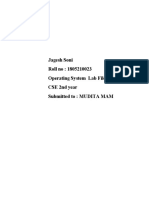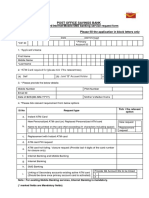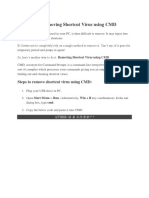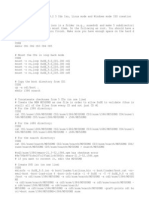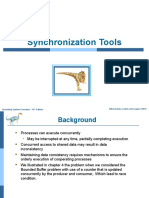0% found this document useful (0 votes)
273 views71 pagesUnix Internals Unix Internals: Introduction To Kernel Introduction To Kernel
The document provides an introduction to UNIX kernel architecture and concepts. It discusses two major subsystems in the UNIX kernel: the file subsystem and process control subsystem. The file subsystem manages files and file data using inodes and a buffering mechanism. It interacts with block I/O devices to initiate data transfer. The process control subsystem is responsible for process synchronization, inter-process communication, memory management, and scheduling. It controls the allocation of memory and CPU time for processes. System calls allow user programs to interface with these subsystems to perform tasks like opening, reading and writing files or creating new processes.
Uploaded by
kumar nCopyright
© © All Rights Reserved
We take content rights seriously. If you suspect this is your content, claim it here.
Available Formats
Download as PDF, TXT or read online on Scribd
0% found this document useful (0 votes)
273 views71 pagesUnix Internals Unix Internals: Introduction To Kernel Introduction To Kernel
The document provides an introduction to UNIX kernel architecture and concepts. It discusses two major subsystems in the UNIX kernel: the file subsystem and process control subsystem. The file subsystem manages files and file data using inodes and a buffering mechanism. It interacts with block I/O devices to initiate data transfer. The process control subsystem is responsible for process synchronization, inter-process communication, memory management, and scheduling. It controls the allocation of memory and CPU time for processes. System calls allow user programs to interface with these subsystems to perform tasks like opening, reading and writing files or creating new processes.
Uploaded by
kumar nCopyright
© © All Rights Reserved
We take content rights seriously. If you suspect this is your content, claim it here.
Available Formats
Download as PDF, TXT or read online on Scribd
/ 71








